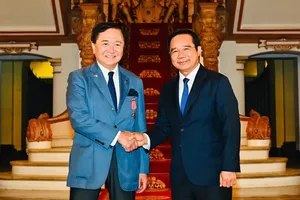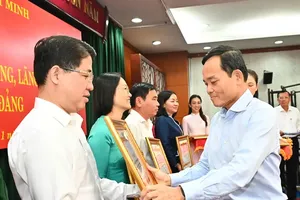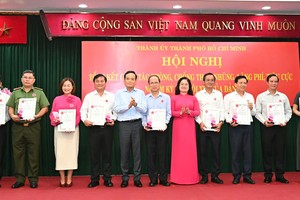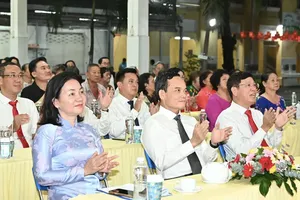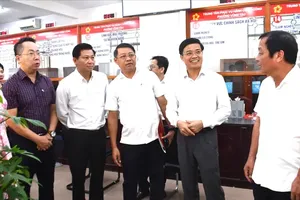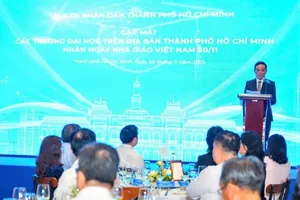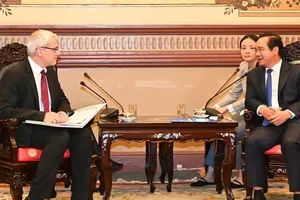
This new Ho Chi Minh City is not only vast in geographical scope, but also carries with it the aspiration of becoming a model mega-city — one where the government is close to and responsive to its citizens, fosters development, and builds a livable urban environment.
Journalists from Sai Gon Giai Phong Newspaper collected varied viewpoints on this monumental shift, as the revitalized Ho Chi Minh City sets out on a path of accelerated, sustainable growth, poised to lead as the nation’s socio-economic engine and a prominent regional and global hub.
According to Deputy Secretary of the Ho Chi Minh City Party Committee and Chairwoman of the City People’s Council Nguyen Thi Le, the country is entering a moment of profound significance. From July 1, the implementation of National Assembly Resolution No. 202/2025/QH15 on the reorganization of provincial-level administrative units begins. Among the key changes is the merger of Ho Chi Minh City, Binh Duong Province, and Ba Ria - Vung Tau Province into a new administrative unit named Ho Chi Minh City — a pivotal turning point. This newly restructured city stands at the threshold of a historic opportunity. This is not merely a redrawing of boundaries, but a comprehensive transformation in structure, mindset, vision, and aspiration.
At the same time, the two-tier local government model is officially implemented nationwide. This is a strategic shift in administrative reform that reflects the deep trust and expectations of the people for a modern, transparent, service-oriented government that is close to and serves its citizens. It is a powerful motivator for the nation to confidently enter a new era of development — one marked by prosperity, strength, and vitality.
The launch of the two-tier local governance model ushers in a new phase, full of both opportunities and challenges. It demands proactive adaptation, innovative thinking in governance, and enhanced executive capacity. This milestone also underscores the strong political will of the city’s Party Committee, government, and citizens to establish a streamlined, robust, efficient, and effective administrative system that meets the demands of modern development.
This new chapter offers an unprecedented opportunity for sustainable growth, aiming to build Ho Chi Minh City into a modern mega-city with strong influence — the driving force of Vietnam’s economic growth and a rising presence on the global stage. She firmly believes that the new Ho Chi Minh City will continue to grow faster and more sustainably, befitting its role as the country’s economic locomotive and a leading center of culture, education, science, and technology for both the nation and the region.
Director Tran Quang Thang of the Ho Chi Minh City Institute of Economics and Management, shared that city dwellers and businesses are placing high expectations on the transformative potential of merging Ho Chi Minh City, Binh Duong, and Ba Ria - Vung Tau into a single mega-city. This is not merely an administrative restructuring, but a rare opportunity to catalyze breakthroughs across the board — from infrastructure and resource mobilization to institutional reform and the investment climate.
The transition to a two-tier local government system will help streamline the administrative apparatus, enhance operational efficiency, and eliminate bottlenecks that hinder growth.
A streamlined and efficient system ensures central policies are implemented swiftly at the local level without delays or barriers. Citizens seek more than just a superficial merger—they expect a clear transformation in administrative reform and tangible support for businesses, particularly the private sector, which plays an increasingly critical role in the economy.
As the country’s economic locomotive, contributing roughly 25 percent of national GDP and targeting growth above 10 percent, the new Ho Chi Minh City carries tremendous expectations. It must truly evolve into a livable mega-city — one with coherent urban planning, green and clean environments, and strong environmental protection. It should be a city where people and businesses alike have ample opportunity to thrive, supported by a professional and service-oriented government. That is the aspiration of its people.
The unification of these three regions will create a powerful synergy — combining capital, technology, talent, and development space. If executed well, this could become Vietnam’s model urban center: a destination that’s easy to invest in, easy to live in, and easy to grow in.
Phan Thanh Binh, former Chairman of the National Assembly’s Committee for Culture, Education, Youth, Adolescents, and Children, stated that from an economic perspective, the new Ho Chi Minh City contributes approximately 25 percent of the nation's GDP. This expanded entity integrates three core economic pillars including Ho Chi Minh City serves as a hub for finance, technology, and innovation; Binh Duong specializes in high-tech industry; and Ba Ria - Vung Tau functions as a strategic center for logistics and energy.
This complementary framework fosters a multi-dimensional, sustainable, and highly promising economic structure. Given this broadened scope, a "cross-border" development approach is crucial. The new city must establish functional regional clusters that pragmatically and mutually support the interconnected development of its economy, society, and populace.
Such a development model makes institutional reform and regional coordination an urgent priority. The new Ho Chi Minh City must not only lead economically but also pioneer institutional innovation and modern governance. It should serve as a testbed for breakthrough policies including efficient regional coordination mechanisms, smart urban management models, global talent attraction, bold digital transformation, and green development. Successes here can ripple outward, providing valuable lessons for other localities.
This role grows even more vital as Vietnam aims to become a developed country by 2045. With a vast economic space and aggregated resources, the new Ho Chi Minh City must be at the forefront of attracting international investment, absorbing supply chain shifts, and advancing high-tech industries with regional and global reach. At the same time, the city must become a magnet for a new generation of citizens — dynamic, creative, entrepreneurial, and globally minded.
A new era has begun. With greater scale, resources, and ambition, the new Ho Chi Minh City is not only an economic locomotive but also a strategic thinking hub — a pioneering model for national development. This is both a profound responsibility and a historic opportunity for the city to contribute to Vietnam’s bold leap forward.
Tran Thi Lam, a healthcare worker in Con Dao, hopes for more systematic investment in Con Dao.
The people of Con Dao, including herself, hope the new government structure will come with enhanced authority and more flexible mechanisms to swiftly and effectively address local issues. Residents’ trust in this transition stems from the desire to see a government that is close to the people—friendly, transparent, responsive, and more action-oriented for the sake of residents' well-being.
She hopes to see well-planned investment in technology on Con Dao, especially in the rollout of digital platforms and high-level online public services integrated with cashless payment systems. Furthermore,it is crucial to strengthen administrative reform to make procedures faster and more convenient for both citizens and businesses.
At the same time, she places great hope in achieving a balance between preserving nature, safeguarding historical sites, and promoting sustainable tourism development on the island. Additionally, she wishes for more policies that encourage local investment, entrepreneurship, education, and employment—so that young people can live, grow, and contribute meaningfully to this special place over the long term.
Secretary Duong Quang Thuan of the Party Cell in Binh Tri Dong Ward of Ho Chi Minh City’s District 8 expected the the new Ho Chi Minh City will enhance quality of life for inhabitants. Being a longtime resident of Ho Chi Minh City, a retired military officer, and currently serving as the Secretary of the local Party Cell, he is hopeful that the newly restructured Ho Chi Minh City will enter a new chapter of socio-economic development—one that meaningfully improves people’s lives and enhances public service delivery.
He especially hopes that the new city will prioritize investment in healthcare, education, and cultural-social infrastructure, ensuring that citizens can fully benefit from the fruits of economic progress. When people see tangible improvements in their daily lives and livelihoods, they are more empowered and motivated to contribute to both the city’s and the country’s continued growth.
He believes the new Ho Chi Minh City is well-positioned to thrive and make even greater strides in the years ahead.
Nguyen Bao Minh, Secretary of the Youth Union at Vietnam National University, Ho Chi Minh City supposed that this is historic opportunity to lead through innovation.
Ho Chi Minh City stands at a pivotal moment—an opportunity to shape a new model of urban development that goes beyond its role as an economic powerhouse. It is poised to become a national and regional leader in science, technology, and innovation.
He hopes to see the city make bold strides in its science and technology development strategy, especially in the application of advanced technologies across urban management, healthcare, education, and industry. Equally important are policies that promote research, facilitate knowledge transfer, and support the commercialization of scientific outcomes—ensuring that great ideas move off the page and into real-world impact.
A key part of this vision is cultivating a generation of young intellectuals—those who are committed, inventive, and ready to shape future trends. By investing in higher education, vocational training, and innovation hubs, Ho Chi Minh City can transform into Southeast Asia’s creative valley—a gathering place for Vietnamese talent to grow and shine.
The Ho Chi Minh City of the future must be bold—unafraid to take risks, open to experimentation, and willing to learn from failure in order to innovate and thrive. The city needs forward-thinking policies that empower young people, foster startups, safeguard the environment, and promote cultural development. Only then can it be a place where young citizens not only work in a globally competitive environment, but also live in a city rich in identity and values.
With the right investment in science, technology, and human capital, Ho Chi Minh City will become a powerful and sustainable engine for a prosperous, modern future.
Meanwhile, musician Huy Tuan, General Director of the Ho Chi Minh City International Music Festival - HOZO, believes that the merger presents a significant opportunity to connect and advance the performance industry.
He emphasized that the collaboration between Ho Chi Minh City, Binh Duong Province and Ba Ria - Vung Tau Province will yield substantial benefits for the performance sector. This will lead to an expansion of the performance market, an increase in performance venues, a diversification of performance formats, and notably, a growth in the scale of both national and international festivals.
Moreover, it will also enhance the potential of music performances in conjunction with tourism promotion. At present, artists and producers of cultural, artistic, and entertainment programs are eagerly anticipating this pivotal moment that promises to bring about significant change.
British Consul General in HCMC Alexandra Smith announced that new HCMC will expand cooperation potential between the UK and Vietnam.
In her role as Consul General and Director of Trade for the UK in Vietnam, she is proud to affirm the UK's long-standing support for HCMC's development goals. The UK consistently aligns with the city's development direction, from building the International Financial Center (IFC) to promoting green growth, sustainable infrastructure, education, and innovation in healthcare. These efforts are supported by strong bilateral cooperation frameworks such as the UK-Vietnam Free Trade Agreement (UKVFTA) and the UK's accession to the Comprehensive and Progressive Agreement for Trans-Pacific Partnership (CPTPP).
As HCMC expands through mergers with neighboring provinces, she believes the city will witness an even stronger boom in manufacturing and logistics, attracting more global businesses and human resources, which will lead to an increasing demand for quality goods, education, and services. This presents a valuable opportunity for British businesses, which are globally prominent in fields such as education, financial technology, legal services, digital infrastructure, and high-end consumer goods.
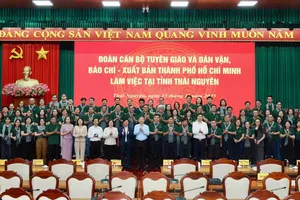
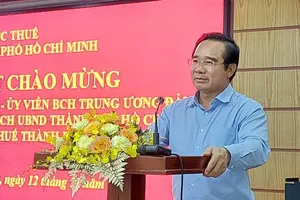
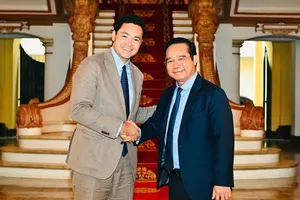
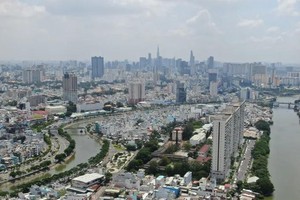
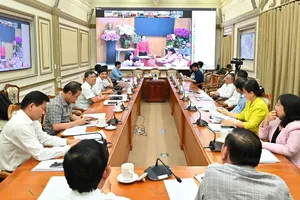
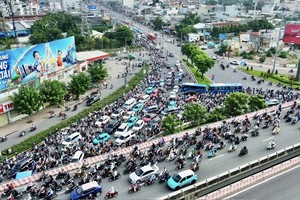
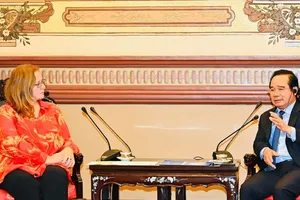
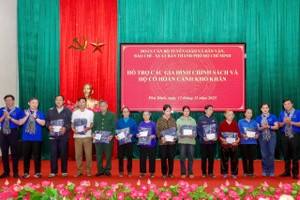

)
